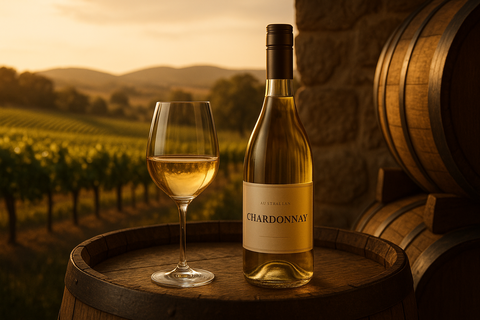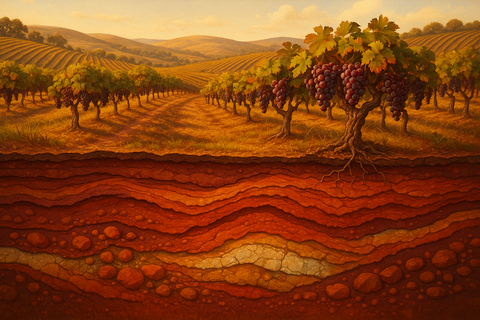In the world of wine, the term "clone" doesn't conjure images of science fiction laboratories; it represents one of the most significant advances in modern viticulture. Vine clones are genetically identical copies of a mother vine, selected for specific traits that can dramatically influence wine quality, yield, and character. For Australian winemakers, understanding and selecting the right clones has become crucial to producing wines that truly express their terroir.
What Are Vine Clones?
Vine clones are created through vegetative propagation—taking cuttings from a single "mother" vine and growing new plants that are genetically identical to the original. Over centuries, different clones of the same grape variety have emerged through natural mutation and careful selection by vignerons who noticed superior characteristics in particular vines.
Each clone carries the same DNA as its parent but may express different traits due to minor genetic variations or epigenetic factors. These subtle differences can result in variations in berry size, cluster density, ripening time, disease resistance, and most importantly for winemakers, flavour profiles and wine quality.
The Science Behind Clonal Selection
Clonal selection isn't a modern invention—European vignerons have been practising it for centuries, though they called it "massal selection." They would identify their best-performing vines and propagate from those plants. Today's approach is more systematic, with research institutions conducting rigorous field trials to evaluate clones across multiple vintages and vineyard sites.
In Australia, organisations like the Australian Wine Research Institute (AWRI) and various state departments of agriculture have established clonal evaluation programs. These trials assess clones for their adaptation to Australian conditions, including heat tolerance, disease resistance, and suitability to different soil types and climates.
Why Clones Matter for Wine Quality
The choice of clone can significantly impact the final wine. Different clones of the same variety can produce wines with distinct aromatics, tannin structures, and flavour profiles. For instance, Pinot Noir clone MV6 tends to produce wines with more intense colour and firmer tannins, whilst the Dijon clones (114, 115, 777) offer more diverse aromatic profiles and elegant structures.
Chardonnay clones provide excellent examples of this variation. Clone I10V1, developed in Australia, produces wines with excellent fruit intensity and good acid retention, making it ideal for warm climate sites. In contrast, Burgundian clones like 95 and 96 tend to produce wines with more mineral characteristics and age-worthiness.
Australian Clone Development
Australia has become a leader in clonal research and development, partly due to its relatively recent wine history allowing for more systematic approaches to vineyard establishment. The country's diverse climatic conditions have also necessitated the development of clones specifically adapted to Australian conditions.
The Chardonnay clone I10V1, selected at the Waite Campus in South Australia, exemplifies successful Australian clonal development. This clone has become widely planted across warm Australian regions due to its ability to maintain acidity and produce high-quality fruit even in challenging conditions.
Similarly, Australian researchers have identified superior Shiraz clones, including BVRC12, which produces smaller berries with intense flavours—ideal for premium wine production. These locally selected clones often outperform imported clones in Australian conditions.
Regional Adaptation and Terroir Expression
Different clones can emphasise different aspects of terroir, making clone selection a crucial tool for winemakers seeking to express their vineyard's unique characteristics. In cool climate regions like Tasmania or the Adelaide Hills, clones that ripen reliably and maintain good disease resistance are essential. Conversely, in warm regions like the Barossa Valley or McLaren Vale, clones that retain acidity and don't over-ripen are preferred.
McLaren Vale producers have become particularly adept at matching clones to their unique terroir. The region's Mediterranean climate and diverse soils—from ancient sands to ironstone gravels—provide ideal testing grounds for different clonal selections. Many McLaren Vale cellars have invested heavily in premium clonal material to maximise the expression of their distinctive vineyard sites.
This regional adaptation extends beyond climate to soil types. Some clones perform better on limestone soils, others on volcanic soils or alluvial deposits. Understanding these interactions allows winemakers to maximise their vineyard's potential.
The Economics of Clonal Selection
Whilst establishing vineyards with superior clones requires significant upfront investment; quality clonal material can cost considerably more than standard planting material the long-term benefits often justify the expense. Superior clones can produce higher quality fruit, command premium prices, and reduce production costs through improved disease resistance and better adaptation to local conditions.
For Australian wine regions competing on the global stage, investing in the best available clonal material has become essential for maintaining competitiveness and reputation. This investment philosophy is evident across McLaren Vale's premium wine producers, where quality-focused estates have prioritised clonal selection as part of their commitment to excellence.
Popular Clones in Australian Regions
Shiraz Clones
- BVRC12: Produces small berries with intense colour and flavour, popular in premium regions including McLaren Vale
- PT23: High-yielding clone suitable for commercial production
- 1654: French clone producing elegant, structured wines
Chardonnay Clones
- I10V1: Australian-developed clone ideal for warm climates
- Bernard 95: Burgundian clone producing mineral-driven wines
- Gingins 108: Swiss clone known for consistent quality
Pinot Noir Clones
- MV6: Produces deeply coloured wines with firm structure
- Dijon 114: Known for spicy, complex aromatics
- Dijon 777: Produces elegant wines with excellent ageing potential
Future Directions in Clonal Research
Australian clonal research continues to evolve, with new technologies allowing for more precise selection and faster evaluation. Genomic tools are helping researchers identify the genetic markers associated with desirable traits, potentially accelerating the development of new clones.
Climate change is also driving clonal research, with scientists seeking clones that can maintain quality whilst adapting to rising temperatures and changing rainfall patterns. This research is crucial for ensuring the long-term sustainability of Australian wine production.
Additionally, there's growing interest in heritage clones—old vine material that may carry unique genetic traits. These "heirloom" clones could provide valuable genetic diversity for future breeding programs.
McLaren Vale's Clonal Innovation
McLaren Vale has emerged as a testing ground for innovative clonal selection, with many producers experimenting with lesser-known clones to differentiate their wines. The region's collaborative approach to viticultural research has led to shared knowledge about which clones perform best in specific vineyard blocks and soil types.
This commitment to innovation is reflected in the diverse range of styles available from McLaren Vale producers, where careful clonal selection contributes to the distinctive character that sets these wines apart in the global marketplace.
The Practical Impact
For wine consumers, clonal selection translates to more diverse and higher-quality wines. The careful matching of clones to sites and winemaking styles means that Australian wines can express their regional character more distinctly whilst maintaining international competitiveness.
The "attack of the clones" in Australian viticulture represents a quiet revolution that's transforming wine quality across the continent. By understanding and utilising the genetic diversity within grape varieties, Australian winemakers are crafting wines that not only reflect their unique terroir, but also push the boundaries of what's possible in their respective regions.
This scientific approach to an ancient craft demonstrates how tradition and innovation can work together to produce exceptional results. As Australian wine regions continue to mature and refine their identities, clonal selection will remain a crucial tool in the pursuit of viticultural excellence.
For wine enthusiasts, understanding clones adds another layer of appreciation when tasting wines—recognising that behind every great bottle lies careful selection of the genetic building blocks that make exceptional wine possible.




Comments (0)
There are no comments for this article. Be the first one to leave a message!